IPTV Smarters Player: Your All-In-One Streaming Solution
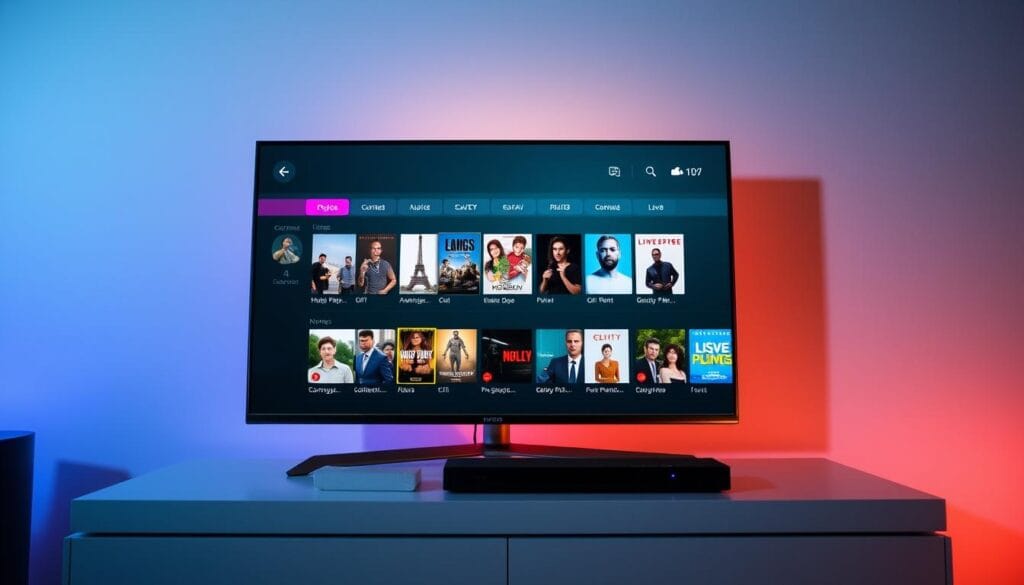
Discover a new way to enjoy your favorite TV shows and movies with IPTV Smarters Player, the ultimate streaming solution. This innovative application brings together a vast array of channels and on-demand content, making it an all-in-one entertainment hub. With IPTV Smarters Player, you can access a vast library of content, including live TV, movies, and series, all in one place. The intuitive interface makes it easy to navigate and find what you’re looking for, ensuring a seamless viewing experience. Key Takeaways Understanding IPTV and Streaming Technology Understanding IPTV is crucial for grasping the future of television streaming in Canada. IPTV, or Internet Protocol Television, delivers television content over the internet, differing from traditional methods that rely on satellite or cable. What is IPTV and How Does It Work? IPTV streams content directly to your device via the internet, allowing for more flexibility and personalization than traditional TV. It works by encoding TV content into internet protocol packets, which are then streamed to your device. This method enables features like pause, rewind, and fast-forward, enhancing the viewing experience. With IPTV, users can access a wide range of channels and on-demand content. The Evolution of Streaming Solutions in Canada Canada has seen significant growth in streaming solutions, driven by consumer demand for more flexible viewing options. IPTV has become a popular choice, offering a wide range of channels and on-demand content. The evolution of streaming technology has also led to improved internet infrastructure, supporting higher quality streams and more reliable connections. As a result, Canadians now have access to a diverse range of streaming services, catering to various preferences and viewing habits. IPTV Smarters Player: An Overview The IPTV Smarters Player has revolutionized streaming in Canada with its comprehensive features. This application is designed to provide users with a seamless and versatile streaming experience. Origins and Development History IPTV Smarters Player was developed to address the growing demand for a more sophisticated and user-friendly streaming solution. Its origins lie in the need for an application that could handle multiple streaming sources and provide a unified interface. Core Purpose and Functionality The core purpose of IPTV Smarters Player is to offer a robust platform for streaming various content types, including live TV, movies, and series. Its functionality includes support for M3U playlists, EPG (Electronic Program Guide), and multi-screen viewing capabilities. Popularity Among Canadian Streamers IPTV Smarters Player has gained significant popularity among Canadian streamers due to its flexibility and feature-rich interface. The application’s ability to support various content sources and its user-friendly design have made it a preferred choice. The application’s popularity can be attributed to its ability to cater to diverse streaming needs, making it a versatile option for Canadian users. Key Features of IPTV Smarters Player With its user-friendly interface and advanced functionality, IPTV Smarters Player stands out in the streaming world. This section delves into the key features that make IPTV Smarters Player a preferred choice among streamers. User Interface and Design Elements The user interface of IPTV Smarters Player is designed to be intuitive and visually appealing. It ensures that users can navigate through various options with ease. Navigation System The navigation system is straightforward and responsive, allowing users to quickly access their favorite channels and content. Visual Aesthetics and Themes IPTV Smarters Player offers a range of visual themes and aesthetics that cater to different user preferences, enhancing the overall viewing experience. Content Organization and Management The IPTV Smarters Player excels in content organization, making it easy for users to manage and access their content libraries. It supports various content sources and provides a seamless viewing experience. Playback Controls and Options The playback controls are comprehensive, offering features such as pause, rewind, and fast-forward. Users can also adjust playback settings to suit their network conditions. Overall, the IPTV Smarters Player is equipped with a range of features that enhance the streaming experience, making it a top choice for users in Canada and beyond. Device Compatibility and System Requirements The IPTV Smarters Player app is compatible with multiple operating systems, ensuring broad accessibility. This compatibility is crucial for users who prefer different devices and platforms. Android Devices and TV Boxes IPTV Smarters Player supports Android devices, including smartphones, tablets, and TV boxes. This support allows users to enjoy seamless streaming on a variety of Android-based devices, from budget-friendly options to high-end models. The app is optimized for Android versions 4.4 and above, ensuring a wide range of compatibility. iOS Devices and Apple TV For iOS users, IPTV Smarters Player is available on iPhones, iPads, and Apple TV. The app is designed to work smoothly with iOS versions 9.0 and later, providing a stable streaming experience across different Apple devices. Smart TVs and Other Platforms IPTV Smarters Player also extends its compatibility to Smart TVs and other platforms, including devices running on MAG, Linux, and Windows operating systems. This broad compatibility ensures that users can access their IPTV content on their preferred device, whether it’s a Smart TV, a streaming stick, or other supported platforms. Platform Minimum Version Android 4.4 iOS 9.0 How to Download and Install IPTV Smarters Player Getting started with IPTV Smarters Player requires downloading and installing the app, a simple process we’ll guide you through. Android Installation Guide For Android devices, there are two primary methods to install IPTV Smarters Player. Google Play Store Method You can easily find IPTV Smarters Player on the Google Play Store by searching for the app and clicking “Install.” APK Installation Method Alternatively, you can download the APK file from a trusted source and install it manually on your Android device. iOS Installation Process For iOS devices, IPTV Smarters Player can be downloaded and installed directly from the App Store by searching for the app and following the installation prompts. Installation on Smart TVs and Other Devices Smart TVs and other devices may have different installation processes. For example, some Smart TVs allow you to download apps directly, while others may require external devices like Android TV boxes.
Discover IPTV Canada’s Hidden Perks

Are you tired of traditional TV services? IPTV Canada offers a refreshing alternative, providing a more personalized viewing experience. With IPTV services, Canadians can access a vast library of content, including live TV, on-demand movies, and TV shows. This innovative technology allows users to enjoy their favorite content with greater flexibility and customization. As we explore the world of IPTV Canada, we’ll highlight its hidden perks and what makes it an attractive option for those looking to switch. Key Takeaways What Is IPTV and How Does It Work? Understanding IPTV requires delving into its core technology and functionality. Internet Protocol Television, or IPTV, is a system where television services are delivered through an internet connection, rather than through traditional terrestrial, satellite, or cable formats. The Technology Behind Internet Protocol Television IPTV uses internet protocol to deliver television content. This technology allows for the streaming of media content, including TV shows and movies, directly to a user’s device via the internet. The key to IPTV’s functionality lies in its ability to provide high-quality streaming by leveraging broadband connections. How IPTV Differs from Traditional Broadcasting Methods Unlike traditional cable or satellite TV, IPTV offers a more flexible viewing experience. IPTV streaming allows users to watch content on-demand, pausing, rewinding, or fast-forwarding through programs as they would with a DVR. This is a significant departure from the linear viewing experience of traditional broadcasting. Some of the key differences include: By utilizing iptv streaming, users can enjoy a more personalized and interactive television experience. This represents a significant shift in how television content is consumed, making IPTV an attractive option for those seeking flexibility and high-quality viewing. The Current Landscape of IPTV Canada The landscape of television in Canada is shifting with the rise of IPTV. As technology advances and internet speeds improve, IPTV services are becoming increasingly popular. This shift is transforming the way Canadians consume television, offering more flexibility and a wider range of content than traditional broadcasting methods. Growth and Popularity in Recent Years IPTV Canada has experienced significant growth over the past few years. According to recent statistics, the IPTV market in Canada has seen a substantial increase in subscribers, with many providers reporting a surge in demand. This growth can be attributed to the improving internet infrastructure and the increasing availability of high-speed internet across the country. Key statistics highlighting the growth include: Year Number of Subscribers Growth Rate 2020 1.2 million 20% 2021 1.5 million 25% 2022 2.0 million 33% Why Canadians Are Switching to IPTV Services Canadians are switching to IPTV services for several reasons. One of the primary reasons is the flexibility IPTV offers. Unlike traditional TV services, IPTV allows users to watch content on-demand and on various devices, making it a more convenient option. Additionally, IPTV services often provide a wider range of channels and content, including international programming, which is a significant draw for many users. As IPTV continues to grow in popularity, it’s clear that Canadians are embracing this modern TV solution for its convenience, flexibility, and extensive content offerings. Top Hidden Benefits of IPTV Services in Canada With IPTV, Canadians can enjoy a more personalized viewing experience, and it’s this personalization that’s revealing its hidden benefits. IPTV services offer a range of advantages that make them an attractive alternative to traditional television. Significant Cost Savings Compared to Traditional Cable One of the most significant benefits of IPTV is the cost savings. By cutting out the middleman and delivering content directly over the internet, IPTV providers can offer their services at a lower price point than traditional cable companies. This means that Canadians can enjoy their favorite TV shows and movies without breaking the bank. For example, IPTV services often offer à la carte channel selection, allowing viewers to pay only for the channels they watch. This can lead to significant savings, especially for those who don’t watch a lot of TV. Unparalleled Content Variety and Accessibility IPTV services also offer unparalleled content variety and accessibility. With a vast library of on-demand content, viewers can watch what they want, when they want. This includes a wide range of TV shows, movies, and even live sports. Moreover, IPTV services are not limited by geographical constraints, making it possible for Canadians to access content from around the world. Flexibility and Convenience Features The flexibility offered by IPTV services is another significant advantage. With features like multi-device streaming and time-shifting, viewers have more control over their viewing experience than ever before. Multi-Device Streaming Capabilities IPTV services allow users to stream content on multiple devices, including smartphones, tablets, smart TVs, and even gaming consoles. This means that Canadians can watch their favorite shows and movies wherever they are, as long as they have a stable internet connection. Time-Shifting and Recording Options Additionally, many IPTV services offer time-shifting and recording options, allowing viewers to pause, rewind, and record live TV. This feature is particularly useful for those who miss their favorite shows or want to watch something again. In conclusion, IPTV services in Canada offer a range of hidden benefits, from cost savings and content variety to flexibility and convenience features. As the television landscape continues to evolve, it’s clear that IPTV is becoming an increasingly popular choice for Canadians. Superior Streaming Quality: The Technical Edge IPTV Canada offers a significant upgrade in streaming quality, leveraging the latest technology to provide viewers with an unparalleled viewing experience. This upgrade is largely due to the advanced capabilities of IPTV services, which are designed to deliver high-quality video content. HD and 4K Streaming Capabilities One of the key advantages of IPTV is its ability to stream content in high definition (HD) and 4K resolution. This means that viewers can enjoy their favorite TV shows and movies with crystal-clear clarity, making for a more immersive viewing experience. With IPTV, Canadians can access a wide range of HD and 4K content, from the latest blockbuster movies to popular TV series. The availability of HD and 4K streaming is a significant draw
How To Install XCIPTV Player
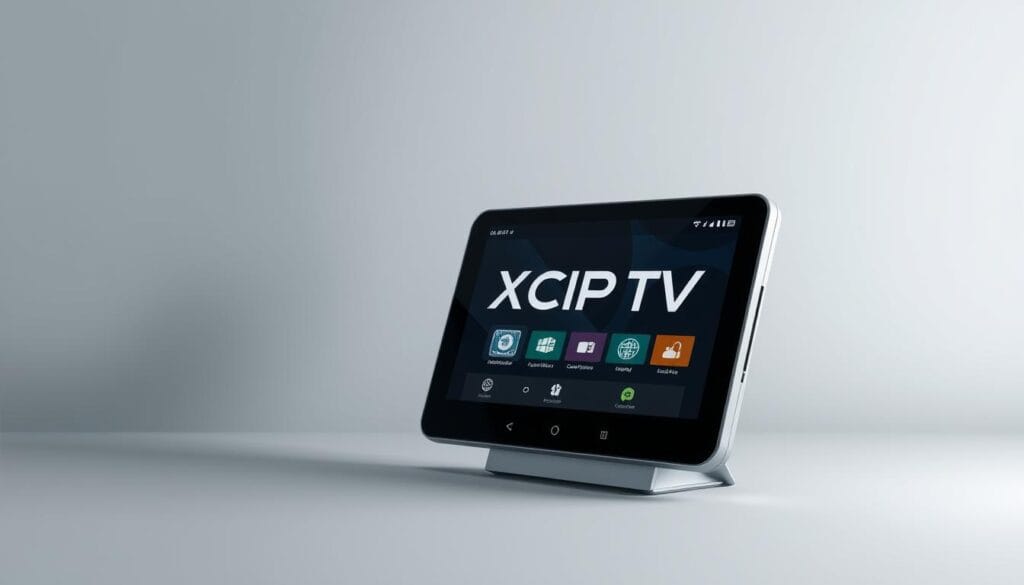
Are you tired of complicated media players that just don’t deliver? Are you looking for a simple way to enjoy your favorite IPTV channels? Installing the right IPTV app can make all the difference. The XCIPTV player is a popular choice among users due to its ease of use and wide compatibility with various devices. To get started, you’ll first need to download and install the app. By following a few straightforward steps, you can have the XCIPTV player up and running on your device, ready to stream your favorite content. Key Takeaways What Is XCIPTV Player and Why Use It? In the realm of IPTV streaming, XCIPTV Player has emerged as a leading platform, offering compatibility with a range of devices. This section will explore the ins and outs of XCIPTV Player, its key features, and why it’s a preferred choice for many. Key Features and Benefits XCIPTV Player is designed to provide a seamless viewing experience. Some of its standout features include: These features make XCIPTV Player an attractive option for those looking to enjoy live TV and access a wide range of channels. Compatibility with Devices One of the key advantages of XCIPTV Player is its broad compatibility. Whether you’re using an Android device or a Firestick, XCIPTV Player can be easily installed and used. This compatibility ensures that users can enjoy their favorite IPTV services across different platforms. Understanding IPTV Services IPTV, or Internet Protocol Television, is a service that provides television programming through the internet. XCIPTV Player is designed to work with various IPTV services, allowing users to access a vast array of channels and content. By understanding how IPTV services work, users can better appreciate the value that XCIPTV Player brings to their viewing experience. Before You Begin: Requirements for Installation Before installing XCIPTV Player, it’s essential to ensure your device meets the necessary requirements. This preparation will help guarantee a smooth and successful installation process. Device Requirements To install XCIPTV Player, your device should meet certain specifications. Here are the key device requirements: Internet Connection Needs A stable and fast internet connection is crucial for a seamless viewing experience with XCIPTV Player. We recommend: Ensure your internet connection meets these requirements to avoid buffering issues. IPTV Subscription Information To use XCIPTV Player, you’ll need an active IPTV subscription. Make sure you have the following details ready: Installing XCIPTV Player on Android Devices The XCIPTV Player installation on Android devices is a breeze, whether you choose the Google Play Store or manual APK installation. This flexibility allows users to select the method that best suits their preferences and device capabilities. Installation via Google Play Store For a seamless and secure installation, using the Google Play Store is recommended. Simply search for “XCIPTV Player” in the Play Store, select the app from the search results, and click “Install.” The app will be downloaded and installed automatically on your Android device. Manual APK Installation If you prefer manual installation or if the Google Play Store is not accessible, you can download the XCIPTV Player APK from a trusted source. Navigate to the download location on your device, open the APK file, and follow the prompts to install. Ensure that your device allows installations from unknown sources by adjusting the settings accordingly. Permissions and Settings During installation, you may be prompted to grant certain permissions to the XCIPTV Player, such as access to storage or network connectivity. Review these permissions carefully and grant them as necessary for the app to function correctly. Additionally, ensure that your device’s settings are configured to allow the app to run smoothly, such as enabling necessary permissions or adjusting battery saver settings. Key steps to consider: How to Install XCIPTV on Firestick Installing XCIPTV on your Firestick is a straightforward process that can be completed in a few steps. To get started, you’ll need to decide on the installation method that works best for you. Using the Amazon App Store The easiest way to install XCIPTV on your Firestick is by using the Amazon App Store. Simply search for XCIPTV in the store, download the app, and follow the on-screen instructions to complete the installation. Installing with Downloader App If XCIPTV is not available on the Amazon App Store, you can use the Downloader app to install it. First, download and install the Downloader app from the Amazon App Store. Then, open Downloader and enter the URL for the XCIPTV APK file. Ensure the URL is from a trusted source to avoid any security risks. Enabling Unknown Sources Before you can install XCIPTV using the Downloader app, you’ll need to enable the installation of apps from unknown sources. To do this, go to your Firestick settings, select “My Fire TV” or “Device,” and then look for “Developer options.” Toggle on “Apps from Unknown Sources” and confirm your choice. Verifying Installation Once you’ve installed XCIPTV, verify that it’s working correctly by opening the app and checking for any updates. If you encounter issues, ensure that your Firestick is connected to the internet and that you’ve entered the correct IPTV service credentials. By following these steps, you should be able to successfully install XCIPTV on your Firestick and start enjoying your favorite IPTV channels. Setting Up XCIPTV on Android TV With XCIPTV on Android TV, you can unlock a vast library of entertainment options, and setting it up is easier than you think. Android TV offers a unique viewing experience by combining the simplicity of a TV interface with the flexibility of an Android device. To get started with XCIPTV, you’ll need to install the application on your Android TV. Official Installation Methods The most straightforward way to install XCIPTV on your Android TV is by using the official installation methods. If XCIPTV is available on the Google Play Store for Android TV, you can directly search for it and install it. This method is secure and ensures you get the latest version of the app. Sideloading the Application If XCIPTV is not
Best IPTV Players 2026: Apps for Firestick & Android TV. IPTV Subscription
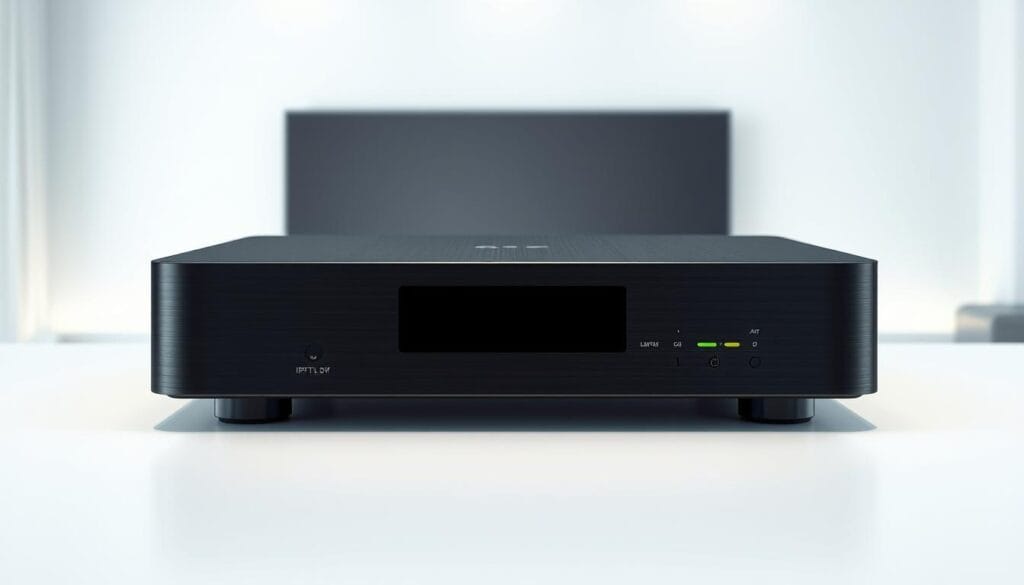
Are you tired of dealing with buffering and poor streaming quality? Choosing the Best IPTV players can make all the difference in your viewing experience. With numerous options available, it’s essential to select a player that is compatible with your device, whether it’s a Firestick or Android TV. In 2026, the market is filled with various IPTV players that offer seamless streaming. Top IPTV players provide an intuitive interface, high-quality video, and reliable performance. When selecting an IPTV player, consider factors such as compatibility, user interface, and subscription requirements. An IPTV subscription is also crucial for accessing a wide range of channels and content. With the right IPTV player and subscription, you can enjoy a superior streaming experience. Key Takeaways The Evolution of IPTV Technology in 2026 As we dive into 2026, IPTV technology continues to revolutionize how we consume television. With its ability to stream live TV channels and on-demand content over the internet, IPTV is changing the way Canadians watch TV. What Is IPTV and How Does It Work IPTV, or Internet Protocol Television, delivers television content through the internet, unlike traditional satellite or cable formats. It works by encoding TV signals into internet protocol packets, allowing for a more personalized and interactive viewing experience. This technology enables users to access a wide range of channels and on-demand content. Benefits of IPTV Over Traditional Cable One of the main advantages of IPTV is its flexibility. Unlike traditional cable, IPTV allows users to watch content on various devices, including smartphones, tablets, smart TVs, and streaming devices like Firestick. Additionally, IPTV services often come with features like pause, rewind, and record live TV, as well as access to a vast library of on-demand content. The Canadian IPTV Landscape The Canadian IPTV market is thriving, with numerous providers offering a range of services and packages. Canadians can choose from various IPTV services that cater to different viewing preferences, including sports, entertainment, and international content. The popularity of IPTV in Canada is driven by its affordability, flexibility, and the wide range of content available. Some key aspects of the Canadian IPTV landscape include: Best IPTV Players for Streaming in 2026 The best IPTV players for streaming in 2026 offer a combination of features, performance, and compatibility that elevate the viewing experience. As we explore the characteristics of top IPTV players, it’s essential to consider what sets them apart from the rest. What Makes a Great IPTV Player A great IPTV player is more than just a platform for streaming content; it’s a gateway to a seamless viewing experience. Key characteristics include a user-friendly interface, robust playback capabilities, and support for various streaming protocols. These features ensure that users can enjoy their favorite content without interruptions or compatibility issues. Essential Features to Look For When selecting an IPTV player, several essential features should be considered. These include: By focusing on these features, users can find an IPTV player that meets their specific needs and enhances their streaming experience. Device Compatibility Considerations Device compatibility is a critical factor when choosing an IPTV player. The best players are compatible with a range of devices, including Firestick, Android TV, and other smart TV platforms. To illustrate the compatibility of popular IPTV players, consider the following table: IPTV Player Firestick Android TV Smart TV TiviMate Yes Yes Limited IPTV Smarters Pro Yes Yes Yes GSE Smart IPTV Yes Yes Yes This table highlights the importance of checking device compatibility before selecting an IPTV player, ensuring a smooth streaming experience across various platforms. Top IPTV Players for Firestick Devices With so many IPTV apps available for Firestick, selecting the right one can be a daunting task. The ideal IPTV player should offer a seamless viewing experience, robust features, and compatibility with various IPTV services. In this section, we’ll explore the top IPTV players for Firestick devices, including TiviMate, IPTV Smarters Pro, GSE Smart IPTV, and Sparkle TV. TiviMate TiviMate is a popular IPTV player known for its user-friendly interface and robust features. Overview TiviMate offers a clean and intuitive interface, making it easy for users to navigate and enjoy their favorite content. Pros Cons Features IPTV Smarters Pro IPTV Smarters Pro is another highly-regarded IPTV player for Firestick, offering a range of features that enhance the viewing experience. Overview IPTV Smarters Pro is designed to work with various IPTV services, providing a versatile viewing experience. Pros Cons Features GSE Smart IPTV GSE Smart IPTV is a feature-rich IPTV player that offers advanced functionality for Firestick users. Overview GSE Smart IPTV is known for its robust feature set, including support for EPG and advanced playlist management. Pros Cons Features Tivimate Tivimate is an IPTV player that offers a unique viewing experience with its intuitive interface and robust features. Overview Sparkle TV is designed to provide a seamless IPTV experience, with features like EPG and playlist management. Pros Cons Features IPTV Player EPG Support Playlist Management User Interface TiviMate Yes Yes User-Friendly IPTV Smarters Pro Yes Yes User-Friendly GSE Smart IPTV Yes Yes Advanced Sparkle TV Yes Yes User-Friendly Premium IPTV Players for Android TV Android TV users have a plethora of IPTV player options, but premium choices stand out for their advanced features and seamless streaming experience. As the demand for high-quality streaming continues to grow, these premium IPTV players are setting new standards for Android TV users. Perfect Player Overview Perfect Player is a highly regarded IPTV player known for its versatility and robust feature set. It supports a wide range of formats and protocols, making it an excellent choice for Android TV users. Pros Key advantages include its ability to handle complex playlists, support for multiple EPG formats, and a user-friendly interface. Cons Some users may find the initial setup process to be somewhat complex due to its extensive feature set. Features OTT Navigator Overview OTT Navigator is another popular IPTV player that offers a rich set of features tailored for Android TV. It’s known for its intuitive interface and robust performance. Pros The main benefits
IPTV vs Cable TV: Which is Best for Home Entertainment?

When it comes to home entertainment, the debate between IPTV and traditional Cable TV has been ongoing. With the rise of streaming services, viewers are now presented with a multitude of options to choose from, each with its unique features and benefits. The way we consume television has undergone a significant transformation, with viewing preferences shifting towards more personalized and flexible entertainment solutions. As we explore the world of home entertainment, it’s essential to weigh the pros and cons of each option. Key Takeaways What You Need to Know About IPTV and Cable TV Television content delivery has evolved significantly over the years, with IPTV and Cable TV emerging as two prominent options. This evolution has transformed the way we consume television content, offering a range of choices for home entertainment. The Evolution of Television Content Delivery The television landscape has undergone a significant transformation since the advent of Cable TV in the 20th century. Initially, Cable TV revolutionized content delivery by offering a wider range of channels and better reception quality compared to traditional broadcasting. With the advancement of technology, IPTV emerged as a new method of delivering television content through internet protocols. This shift has enabled more flexibility and personalized viewing experiences. Key milestones in this evolution include: Key Differences at a Glance When comparing IPTV and Cable TV, several key differences become apparent. IPTV delivers content over the internet, allowing for greater flexibility and the ability to watch on multiple devices. Cable TV, on the other hand, relies on a traditional broadcasting infrastructure, offering a more stable and consistent viewing experience. Main differences include: IPTV vs Cable TV: Understanding the Technology Understanding the technology behind IPTV and Cable TV is crucial for making an informed decision about your home entertainment needs. The technological infrastructure of these services plays a significant role in determining the quality and reliability of the viewing experience. How IPTV Delivers Content Through Internet Protocol IPTV, or Internet Protocol Television, uses the internet to deliver content to your home. This is achieved through streaming technology, which breaks down video content into data packets that are transmitted over the internet. These packets are then reassembled by your device, allowing for a seamless viewing experience. Streaming Technology and Data Transmission The efficiency of IPTV’s streaming technology depends on the quality of your internet connection. A stable and fast internet connection ensures that data packets are transmitted smoothly, resulting in high-quality video playback. As noted by a leading industry expert, “The future of television lies in IP-based streaming solutions.” This underscores the importance of a robust internet infrastructure for IPTV services. Server-Based Content Distribution IPTV services rely on server-based content distribution, where content is stored on remote servers and accessed via the internet. This allows for a wide range of content to be made available, as servers can be easily updated with new programming. The use of server-based distribution also enables features like video-on-demand and catch-up TV. Cable TV’s Traditional Broadcasting Infrastructure Cable TV, on the other hand, uses a traditional broadcasting infrastructure that is separate from the internet. This involves a network of coaxial cables that transmit television signals directly to your home. Coaxial Cable Networks The coaxial cable network is the backbone of Cable TV’s infrastructure. These cables are designed to carry high-frequency signals over long distances without significant degradation. This ensures that Cable TV can provide a reliable and consistent viewing experience. Signal Transmission Methods Cable TV uses signal transmission methods that are optimized for broadcasting television content. The signals are transmitted through the coaxial cables to a tuner in your TV or cable box, which decodes the signal and displays the content. As a report by a media research firm states, “ Cable TV remains a dominant force in the television landscape due to its reliable signal transmission and wide availability. ” This highlights the strengths of Cable TV’s traditional infrastructure. In conclusion, the technological differences between IPTV and Cable TV are significant. IPTV relies on internet protocol and streaming technology, while Cable TV uses a traditional broadcasting infrastructure based on coaxial cables and signal transmission methods. Understanding these differences is key to choosing the best service for your home entertainment needs. Comparing Costs: IPTV and Cable TV in Canada When it comes to choosing between IPTV and Cable TV in Canada, one of the most critical factors to consider is the cost. The financial implications of selecting one service over the other can be significant, and understanding these costs is essential for making an informed decision. Canadian IPTV Service Pricing Models IPTV services in Canada offer various pricing models to cater to different consumer needs. These models often depend on the range of channels and content offered. Popular Canadian IPTV Providers and Their Rates Some of the popular IPTV providers in Canada include IPTV-Smarter, DAZN, and Netflix (though Netflix is primarily a streaming service, it’s often considered alongside IPTV). Their rates vary, with basic packages starting as low as $10-$20 CAD per month, and more comprehensive packages costing upwards of $50-$70 CAD per month. Subscription Flexibility and Contract Options One of the advantages of IPTV services is their flexibility. Many providers offer month-to-month subscriptions without long-term contracts, allowing consumers to change or cancel their service at any time. This flexibility is particularly appealing to those who wish to avoid being locked into a contract. Cable TV Packages and Pricing in Canada Cable TV providers in Canada also offer a range of packages at different price points, often bundling TV with internet and phone services. Major Canadian Cable Providers and Their Offerings Major Cable TV providers include Rogers, Bell, and Telus. Their basic TV packages can start around $20-$30 CAD per month, but more comprehensive packages with additional channels and features can cost $100 CAD or more per month. Bundle Deals and Long-Term Commitments Cable TV providers often offer discounts for bundling services together and for committing to longer-term contracts. While these deals can reduce the monthly cost, they may also come
How to install IPTV on Ibo Player

Installing IPTV on Ibo Player is a straightforward process that opens up a world of entertainment options. IPTV, or Internet Protocol Television, allows users to stream television content over the internet, providing a flexible and personalized viewing experience. Ibo Player is a popular media player that supports IPTV services, making it easy to access a wide range of channels and content. By following a few simple steps, you can install IPTV on your Ibo Player and start enjoying your favorite shows and movies. Key Takeaways What You Need to Know About Ibo Player and IPTV For those looking to stream IPTV, Ibo Player is a name that stands out. It’s a versatile media player that supports IPTV streaming, making it a favorite among users. In this section, we will explore what Ibo Player is, the basics of IPTV services, and why Ibo Player is a popular choice for IPTV streaming. What is Ibo Player? Ibo Player is a media player application designed to stream multimedia content, including IPTV. It is compatible with various devices, including Android devices, Samsung Smart TVs, and Windows platforms. Ibo Player’s compatibility and user-friendly interface make it an attractive option for IPTV streaming. Understanding IPTV Services IPTV, or Internet Protocol Television, is a service that delivers television content over the internet. Unlike traditional TV broadcasting, IPTV streams content directly to your device via an internet connection. This method allows for more flexibility and a wider range of content options. IPTV services can include live TV, on-demand content, and catch-up TV. Why Ibo Player is Popular for IPTV Streaming Ibo Player’s popularity for IPTV streaming can be attributed to its ease of use, compatibility with various devices, and the ability to support a wide range of IPTV services. The player’s intuitive interface makes it easy for users to navigate and enjoy their IPTV content. Additionally, Ibo Player is regularly updated, ensuring a stable and secure viewing experience. Essential Requirements Before You Begin To ensure a smooth IPTV experience on Ibo Player, certain prerequisites must be met. Before diving into the installation process, it’s crucial to check a few key factors that will affect your IPTV streaming quality and overall user experience. Device Compatibility Check First, verify that your device is compatible with Ibo Player. The app is available on various platforms, including Android devices, Samsung Smart TVs, and Windows. Check the system requirements for Ibo Player on your device manufacturer’s website or the app’s official website to ensure compatibility. Internet Speed Requirements A stable internet connection is vital for uninterrupted IPTV streaming. It’s recommended to have a minimum internet speed of 5 Mbps for SD content, 10 Mbps for HD content, and 25 Mbps for 4K content. You can check your internet speed using online speed test tools. Content Quality Recommended Internet Speed SD 5 Mbps HD 10 Mbps 4K 25 Mbps Obtaining a Valid IPTV Subscription To access IPTV content, you need a valid subscription from an IPTV service provider. Choose a reputable provider that offers the channels and content you’re interested in. Ensure you have the necessary login credentials and understand how to configure your subscription with Ibo Player. Step-by-Step Guide to Download and Install Ibo Player To start enjoying IPTV on your device, you first need to download and install Ibo Player. This process is relatively straightforward and can be completed in a few steps, regardless of whether you’re using an Android device, a Samsung Smart TV, or a Windows platform. Installation Process for Android Devices For Android devices, the installation process involves downloading the Ibo Player app from a trusted source. You can search for “Ibo Player” in your preferred search engine and look for a reliable website that offers the APK file. Ensure that you download from a secure site to avoid malware. Installing on Samsung Smart TVs Installing Ibo Player on Samsung Smart TVs involves using the Smart Hub to search for the app. If it’s available, you can download it directly. If not, you may need to use a third-party app or sideload it using a USB drive. Installation on Windows and Other Platforms For Windows and other platforms, you can usually download the Ibo Player application from the official website or a trusted source. The installation process typically involves running an installer file and following the on-screen instructions. Key Steps: Troubleshooting Installation Issues Sometimes, you may encounter issues during the installation process. Common problems include failed downloads, installation freezes, or compatibility issues. Issue Solution Failed Download Check your internet connection and try again. Installation Freeze Restart your device and try reinstalling. Compatibility Issues Ensure your device meets the minimum requirements for Ibo Player. By following these steps and troubleshooting tips, you should be able to successfully download and install Ibo Player on your preferred device. Setting Up IPTV on Ibo Player Setting up IPTV on Ibo Player is a simple process that starts with the first-time setup and configuration. After installing Ibo Player, you’re just a few steps away from enjoying your favorite TV channels and on-demand content. First-Time Setup and Configuration Upon launching Ibo Player for the first time, you’ll be guided through a setup wizard that helps you configure the basic settings. This includes selecting your preferred language, setting up your network connection, and entering your IPTV subscription details. Ensure you have your M3U playlist URL or login credentials ready to complete the setup. It’s essential to configure these settings correctly to ensure a smooth IPTV streaming experience. The setup process is designed to be user-friendly, making it easy for anyone to get started. Navigating the User Interface Ibo Player’s user interface is designed to be intuitive, allowing you to easily navigate through different sections such as live TV, catch-up TV, and on-demand content. Familiarize yourself with the main menu, where you can access various features and settings. The interface is customizable, enabling you to personalize your viewing experience. You can rearrange channels, create favorite lists, and adjust display settings to suit your preferences. Creating and
Best IPTV Providers in Calgary in 2026 : A Comprehensive Review

Calgary’s residents are increasingly turning to IPTV services for their entertainment needs. With numerous providers available, selecting the right one can be a daunting task. A comprehensive review of IPTV providers in Calgary is essential to understand the current landscape. This article will evaluate top providers based on their service quality, channel offerings, and streaming reliability. The IPTV service market in Calgary is growing rapidly, with various providers offering a range of packages. This review aims to guide consumers in making an informed decision. Key Takeaways The Current State of IPTV in Calgary Calgary’s entertainment scene is undergoing a significant transformation with the rise of IPTV services. This shift is driven by the growing demand for more flexible and diverse entertainment options. How IPTV Has Transformed Entertainment IPTV has revolutionized the way people in Calgary consume television and other media content. With IPTV, users can access a wide range of channels and on-demand content, customizing their viewing experience to suit their preferences. This flexibility has made IPTV an attractive option for those looking for alternatives to traditional cable or satellite TV. The Growing Popularity of IPTV in Alberta The popularity of IPTV in Alberta, including Calgary, is on the rise. Factors contributing to this growth include improvements in internet infrastructure and the increasing availability of high-speed internet. As a result, more residents are turning to IPTV for their entertainment needs, drawn by the promise of a more personalized viewing experience. What Makes a Great IPTV Provider in 2026? As we dive into 2026, the IPTV landscape in Calgary is more diverse than ever, making it crucial to identify the key factors that define a great IPTV provider. With the increasing demand for high-quality streaming services, several key aspects have emerged as critical in evaluating IPTV providers. Streaming Quality Standards A great IPTV provider must offer high streaming quality to ensure a seamless viewing experience. This includes providing content in high definition (HD) or 4K resolution where available, and maintaining a stable and fast connection to prevent buffering or lag. Channel Selection Criteria The variety and quality of channel selection are crucial for an IPTV service. A top provider should offer a diverse range of channels, including popular local and international options, sports channels, and premium content. The ability to cater to different viewer preferences is key. Device Compatibility Requirements In today’s multi-device households, device compatibility is a significant factor. An excellent IPTV provider should be compatible with a range of devices, including smart TVs, smartphones, tablets, and dedicated streaming devices, ensuring that users can watch their content anywhere, anytime. Pricing and Value Considerations Pricing is another critical aspect, as it directly impacts the perceived value of the IPTV service. Providers that offer competitive pricing along with flexible subscription plans and additional features like DVR capabilities or simultaneous streams can significantly enhance the user experience. In conclusion, when selecting an IPTV provider in Calgary in 2026, it’s essential to consider these key factors to ensure you’re getting a service that meets your entertainment needs. How We Evaluated the Best IPTV Calgary Services To determine the top IPTV providers in Calgary, we employed a rigorous testing methodology that assessed various critical factors. Our Testing Methodology Our evaluation process involved a comprehensive analysis of each IPTV service, including their streaming quality, channel lineup, and device compatibility. We tested each service over a period of several weeks, monitoring their performance under different network conditions. Key Performance Metrics We focused on several key performance metrics, including buffering time, channel availability, and overall streaming quality. These metrics were crucial in determining the reliability and efficiency of each IPTV service. IPTV Service Buffering Time (avg) Channel Availability (%) IPTV-Smarter 2.1 seconds 95% Calgary IPTV 1.8 seconds 92% Neon 4K TV 2.5 seconds 98% User Experience Factors In addition to performance metrics, we also evaluated user experience factors such as interface usability and customer support. A user-friendly interface and responsive customer support were considered essential for a satisfactory user experience. Top Premium IPTV Providers in Calgary Calgary residents seeking high-quality IPTV services have several premium options to choose from. These top-tier providers offer exceptional streaming quality, extensive channel lineups, and robust features that enhance the viewing experience. IPTV-Smarter IPTV-Smarter is a premium IPTV provider known for its high-quality streaming and vast channel selection. It offers a user-friendly interface and reliable service, making it a popular choice among Calgary residents. Pros Cons Features IPTV-Smarter boasts several key features, including: Calgary IPTV Calgary IPTV is another premium IPTV provider that has gained popularity in Calgary. It is known for its robust features and high-quality streaming. Pros Cons Features Calgary IPTV’s key features include: Mode IPTV Mode IPTV is a relatively new player in the Calgary IPTV market, offering a diverse range of channels and content at affordable prices. Their service is designed to cater to various viewer preferences, from sports enthusiasts to movie buffs. Pros Cons Features Mode IPTV offers several notable features, including: IPTV Providers with the Best International Content For Calgary residents seeking global entertainment, several IPTV providers stand out for their extensive international content offerings. When it comes to accessing international channels, two providers have garnered attention for their comprehensive lineups and high-quality streaming. Neon 4K TV Neon 4K TV is known for its robust international channel selection, catering to a diverse user base in Calgary. The service provides access to a wide array of channels from around the world, including European, Asian, and Latin American content. Pros Cons Features Neon 4K TV boasts a range of features, including a built-in VPN for secure streaming and support for multiple devices. The service also offers a robust EPG (Electronic Program Guide) for easy navigation. Xtream HD IPTV Xtream HD IPTV is another strong contender in the Calgary market, offering a vast selection of international channels. The service is particularly popular among users seeking content from specific regions, such as South Asian or European programming. Pros Cons Features Epic IPTV features a user-friendly interface and supports a range
How To Set Up IPTV on Roku : Complete Installation Guide
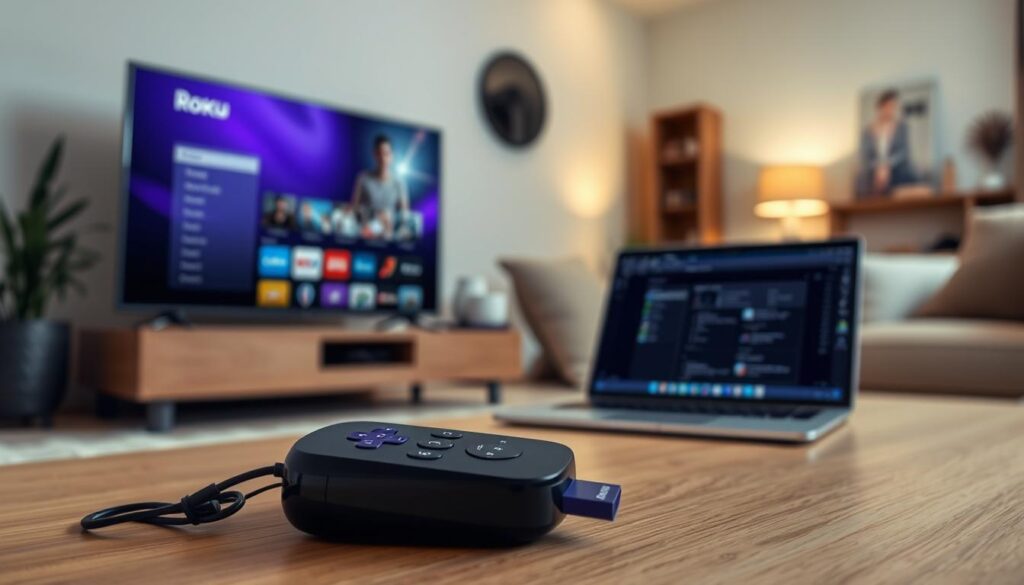
Are you looking to expand your entertainment options by setting up IPTV on your Roku device? This comprehensive guide will walk you through the process, making it easy to access a wide range of channels and enjoy your favorite content. With IPTV on Roku, you can enjoy a more personalized viewing experience, accessing various channels and content that cater to your interests. Our step-by-step guide will help you navigate the installation process, ensuring a seamless setup. Key Takeaways What You Need to Know About IPTV and Roku Understanding the basics of IPTV and Roku is essential for a seamless streaming experience. To get started, let’s explore what IPTV is and how it works. What is IPTV and How Does It Work? IPTV, or Internet Protocol Television, is a service that delivers live TV and on-demand content over the internet. Unlike traditional satellite or cable TV, IPTV uses your internet connection to stream media. This allows for greater flexibility and a wider range of content options. With IPTV, you can access your favorite channels and shows from anywhere, as long as you have a stable internet connection. Overview of Roku Streaming Devices Roku is a popular brand of streaming devices that allow you to access various streaming services on your TV. Roku devices are known for their ease of use and wide compatibility with different streaming services. They come in various models, including the Roku Express, Roku Premiere, and Roku Ultra, each offering different features and capabilities. By connecting a Roku device to your TV, you can access thousands of channels, including those that support IPTV. Benefits of Streaming IPTV Through Roku Streaming IPTV through Roku offers several benefits. Firstly, it combines the flexibility of IPTV with the user-friendly interface of Roku. This means you can enjoy live TV, on-demand content, and catch-up TV on a platform that’s easy to navigate. Additionally, using Roku for IPTV allows you to access a wide range of channels and content in one place, making it a convenient option for entertainment. By understanding IPTV and Roku, you can enhance your streaming experience and enjoy a vast array of content options. Essential Requirements for IPTV on Roku To enjoy IPTV on your Roku device, there are several essential requirements to consider. Ensuring you meet these prerequisites will help you have a smooth and enjoyable streaming experience. Compatible Roku Models and OS Versions First, you need a compatible Roku device. Most modern Roku models support IPTV, including the Roku Streaming Stick+, Roku Ultra, and Roku Premiere. Ensure your Roku device is running the latest OS version to avoid compatibility issues. Internet Speed Requirements A stable internet connection is crucial for IPTV. For standard definition (SD) streaming, a minimum speed of 3 Mbps is recommended. For high-definition (HD) content, you’ll need at least 5 Mbps, while 4K streaming requires 25 Mbps or more. IPTV Subscription Options for Canadian Users Canadian users have various IPTV subscription options. Popular services include IPTV-Smarter. When choosing an IPTV service, consider factors like channel lineup, pricing, and customer support. Additional Equipment You Might Need While a Roku device is the primary hardware needed, you might also require additional equipment such as a high-quality router for a stable internet connection or an external storage device if you plan to store a large IPTV playlist. Popular IPTV Services Compatible with Roku The Roku platform supports multiple IPTV services, catering to different viewer preferences. Whether you’re looking for official apps available in the Roku Channel Store or third-party services that can be accessed through other means, there’s a wide range of options to choose from. Official IPTV Providers in the Roku Channel Store Roku’s Channel Store hosts a variety of official IPTV providers. Some of the most popular include services like IPTV Smarter, Mode IPTV and IPTV-Canadian. These services offer a range of channels and on-demand content that can be easily accessed and installed directly from the Roku interface. Third-Party IPTV Services That Work with Roku Apart from the official providers, several third-party IPTV services are compatible with Roku. Services such as IPTV Smarters and Perfect Player can be accessed through private channels or by using the screen mirroring feature from other devices. These services often provide a more customized viewing experience, allowing users to upload their own M3U playlists. Pricing and Features Comparison When choosing an IPTV service for your Roku, it’s essential to compare pricing and features. Official services in the Roku Channel Store are generally free or subscription-based, with some offering premium content at an additional cost. Third-party services vary widely in pricing, from free trials to monthly or annual subscriptions. Consider what channels and features are most important to you when making your decision. By understanding the different IPTV services available for Roku, you can make an informed choice that best suits your viewing needs. Method 1: Installing Official IPTV Apps on Roku The Roku Channel Store is your gateway to installing IPTV apps on your Roku device. With a wide range of IPTV services available, you can easily find and install the app that suits your streaming needs. Navigating the Roku Channel Store Navigating the Roku Channel Store is a simple process. To begin, ensure your Roku device is connected to the internet. Then, follow these steps: Step-by-Step Installation Process Once you’ve found the IPTV app you want to install, follow these steps: As John Doe, IPTV Expert, notes, “The installation process is straightforward, and most IPTV apps are available for free or through a subscription model.” Account Setup and Authentication After installing the IPTV app, you’ll need to set up your account and authenticate your credentials. This typically involves: IPTV Service Account Setup Authentication Method Service A Create Account Username/Password Service B Login Activation Code Customizing Channel Settings To optimize your IPTV experience, you can customize the channel settings. This may include: By following these steps, you can enjoy a seamless IPTV streaming experience on your Roku device. Method 2: Screen Mirroring IPTV to Your Roku For those looking
IPTV Reseller Canada 2026: Become an IPTV Reseller

The Canadian market for streaming services is booming, and becoming an IPTV reseller can be a lucrative business venture. By providing reliable IPTV services to customers across Canada, you can tap into this growing demand and establish a profitable business. As an IPTV reseller, you will have the opportunity to offer a wide range of channels and on-demand content to your customers, giving them a comprehensive entertainment solution. With the right support and infrastructure, you can focus on growing your customer base and increasing your revenue. Key Takeaways The Growing IPTV Market in Canada As Canadians increasingly cut the cord, the IPTV market is poised for substantial expansion. This shift is driven by consumer demand for more flexible and personalized viewing experiences. Current State of IPTV in Canada The current state of IPTV in Canada is characterized by rapid growth and increasing competition. According to recent statistics, the Canadian IPTV market has seen a significant surge in subscribers over the past few years. This growth is attributed to the improving internet infrastructure and the rising popularity of streaming services. Key Statistics: Year IPTV Subscribers Market Growth Rate 2022 1.2 million 15% 2023 1.5 million 20% 2024 1.8 million 18% Market Projections for 2026 Looking ahead to 2026, market projections indicate continued growth for the IPTV market in Canada. Analysts predict that the market will reach 2.5 million subscribers by 2026, driven by advancements in technology and the increasing availability of high-speed internet. The growing demand for IPTV services presents a significant opportunity for resellers to capitalize on this trend. By understanding the current market state and future projections, IPTV resellers can make informed decisions about their business strategies. What Is an IPTV Reseller? IPTV reselling is an emerging trend in the Canadian telecommunications sector. As the demand for internet-based television services grows, becoming an IPTV reseller can be a lucrative business opportunity. Definition and Basic Concept An IPTV reseller is an individual or business that purchases IPTV services from a provider and then sells them to customers, often under their own brand. This model allows resellers to enter the market with minimal infrastructure investment. The basic concept revolves around re-selling IPTV services to end-users, providing them with access to various channels and on-demand content. How IPTV Reselling Works The process involves partnering with a reliable IPTV provider who supplies the necessary infrastructure and content. As a reseller, you manage your customer base through a reseller panel, which is typically provided by the IPTV provider. Role Responsibilities IPTV Provider Supplies IPTV services, infrastructure, and content IPTV Reseller Markets and sells IPTV services to customers, manages customer support Customer Subscribes to IPTV services, receives support from the reseller Benefits of Becoming an IPTV Reseller in Canada Entering the IPTV reselling market in Canada can be a smart business move, thanks to its various benefits. The IPTV industry is experiencing significant growth, driven by the increasing demand for streaming services. Low Initial Investment One of the primary advantages of becoming an IPTV reseller is the low initial investment required to start the business. Unlike traditional television broadcasting, IPTV services do not necessitate significant upfront costs for infrastructure, making it more accessible to new entrants. Recurring Revenue Streams IPTV reselling offers the potential for recurring revenue streams through subscription-based models. By providing customers with high-quality streaming services, resellers can generate consistent income on a monthly or annual basis. Flexibility and Scalability The IPTV reselling business model is highly flexible and scalable. Resellers can easily adjust their service offerings and pricing strategies to respond to market changes or customer preferences. Profit Margins for Canadian Resellers Canadian IPTV resellers can enjoy attractive profit margins, especially if they can negotiate favorable terms with their IPTV service providers. By offering competitive pricing and high-quality services, resellers can maximize their revenue and profitability. In conclusion, becoming an IPTV reseller in Canada offers numerous benefits, including low initial investment, recurring revenue streams, flexibility, and attractive profit margins. By understanding these advantages, entrepreneurs can make informed decisions about entering the IPTV reselling market. How to Start Your IPTV Reseller Business To establish a successful IPTV reselling business, it’s crucial to follow a well-structured approach. This involves several key steps that will help you navigate the complexities of the IPTV market in Canada. Finding a Reliable IPTV Provider The first step in starting your IPTV reseller business is to find a reliable IPTV provider. This involves researching potential providers, evaluating their content offerings, and assessing their technical capabilities. A reliable provider will offer a stable and high-quality IPTV service, which is essential for maintaining customer satisfaction. Setting Up Your Reseller Panel Once you’ve selected a reliable IPTV provider, the next step is to set up your reseller panel. This typically involves registering with the provider, obtaining access to their reseller platform, and configuring your account settings. The reseller panel will enable you to manage your IPTV subscriptions, monitor customer activity, and handle billing and support. Creating Your Business Plan A comprehensive business plan is vital for the success of your IPTV reseller business. Your plan should outline your target market, pricing strategy, marketing tactics, and financial projections. It’s also essential to define your customer support processes and develop a strategy for handling technical issues. Business Plan Component Description Importance Level Target Market Identify your ideal customer demographics and preferences High Pricing Strategy Determine your pricing model and competitive positioning High Marketing Tactics Outline your promotional channels and campaigns Medium Financial Projections Estimate your revenue, expenses, and profit margins High Legal Considerations for IPTV Resellers in Canada As an IPTV reseller in Canada, it’s crucial to navigate the complex legal landscape to ensure your business operates smoothly. The Canadian government has established regulations to govern the broadcasting and telecommunications industries, which directly impact IPTV services. Understanding Canadian Broadcasting Regulations Canadian broadcasting regulations are overseen by the Canadian Radio-television and Telecommunications Commission (CRTC). IPTV resellers must comply with CRTC regulations, which include requirements for licensing, content distribution, and consumer protection. “The CRTC’s role
M3U Player Setup Guide & How Does It Work in Canada?
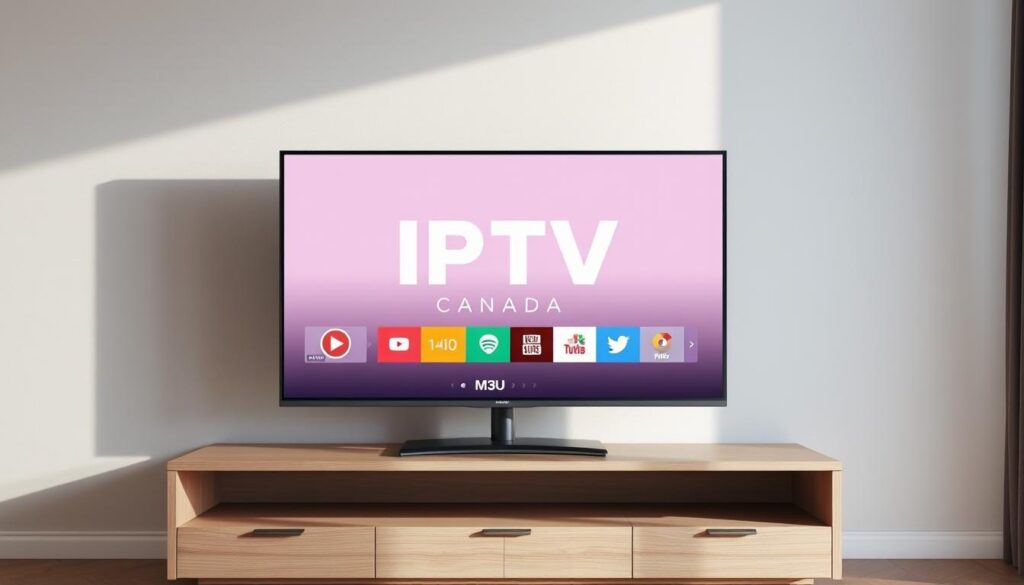
IPTV, or Internet Protocol Television, has been gaining popularity in Canada due to its flexibility and wide range of content offerings. Canadians are increasingly turning to IPTV for their television needs, seeking a more personalized viewing experience. M3U files play a crucial role in IPTV services. Essentially, an M3U file is a playlist that contains links to various media streams, allowing users to access multiple channels through their IPTV providers. The use of M3U files with IPTV services in Canada enables users to enjoy a seamless viewing experience, accessing a broad spectrum of channels and content. This integration is key to the flexibility and customization that IPTV offers. Key Takeaways Understanding the Basics of IPTV IPTV is revolutionizing the way we consume television content. This shift is driven by the ability to stream media over the internet, rather than through traditional broadcast or cable formats. What Is IPTV and How Does It Differ from Traditional TV? IPTV, or Internet Protocol Television, delivers television content over internet protocol networks. Unlike traditional TV, which relies on broadcast signals or cable connections, IPTV uses a broadband internet connection. This fundamental difference allows for greater flexibility and personalization in viewing experiences. The Growth of IPTV Services in North America The IPTV market in North America has seen significant growth, driven by consumer demand for on-demand content and the proliferation of high-speed internet. As a result, IPTV services have become increasingly popular, offering a viable alternative to traditional TV viewing. Key Components of an IPTV System An IPTV system consists of several key components, including content aggregation, encoding, and streaming servers. These elements work together to deliver high-quality video content to users. The content aggregation process involves gathering TV channels and on-demand content, while encoding ensures that the content is prepared for streaming over the internet. What Is M3U in IPTV: A Comprehensive Explanation The M3U file format is a cornerstone of IPTV, enabling the organization and streaming of television channels and content. To understand its significance, we need to delve into its definition, functionality, and relationship with IPTV services. Definition and Origin of M3U Format The M3U format is a type of file used for creating playlists that contain the locations of audio and video files. Originating from the MP3 URL concept, M3U was initially designed for MP3 playlists but has since evolved to support various media formats. This evolution has made M3U a versatile format for IPTV services, allowing for the creation of dynamic playlists that can include multiple media sources. How M3U Files Function as Playlists M3U files serve as playlists that direct media players to the locations of media streams. These files contain a list of URLs pointing to media content, which can be local files or remote streams. When an IPTV player reads an M3U file, it interprets the URLs and connects to the specified streams, enabling users to access various channels and content. The Relationship Between M3U and IPTV Services IPTV services rely on M3U files to provide users with a list of available channels and content. The M3U format allows IPTV providers to organize their offerings in a structured manner, making it easier for users to navigate and access their desired content. The table below illustrates the key aspects of M3U files in IPTV services: Feature Description Benefit Playlist Management M3U files manage media content locations Efficient content organization Stream URLs Contain URLs pointing to media streams Access to various media sources Compatibility Supported by various IPTV players Wide accessibility across devices In conclusion, the M3U format is integral to IPTV services, providing a structured way to organize and stream media content. Understanding M3U files and their functionality is crucial for both IPTV providers and users to ensure a seamless viewing experience. The Technical Aspects of M3U Files Technically, M3U files are the linchpin that holds IPTV streaming services together, enabling seamless content delivery. Understanding the intricacies of these files is crucial for both IPTV service providers and users. Anatomy of an M3U File An M3U file is essentially a plain text file that contains a list of media file URLs. It is used as a playlist by media players to stream content from the specified locations. The anatomy of an M3U file includes a header that identifies the file type and subsequent lines that list the URLs of the media files or streams. M3U vs. M3U8: Understanding the Differences The primary difference between M3U and M3U8 lies in their character encoding. M3U files use a broader character set, while M3U8 files are encoded in UTF-8, making them more versatile for international content. M3U8 is particularly favored for its compatibility with modern streaming requirements and devices. Common File Extensions and Formats M3U files are associated with several file extensions and formats, primarily .m3u and .m3u8. While .m3u is widely supported, .m3u8 offers enhanced functionality, especially for adaptive bitrate streaming. File Extension Description Usage .m3u Standard M3U file extension General IPTV playlists .m3u8 UTF-8 encoded M3U file Adaptive bitrate streaming, international content In conclusion, understanding the technical aspects of M3U files, including their anatomy and the differences between M3U and M3U8 formats, is essential for leveraging IPTV services effectively. How M3U Playlists Enable IPTV Streaming The use of M3U playlists in IPTV services revolutionizes the way we consume television content, offering a flexible and efficient streaming experience. M3U playlists serve as a crucial link between the IPTV service provider and the end-user, facilitating the delivery of content in an organized manner. The Role of M3U in Channel Organization M3U playlists play a vital role in organizing channels for IPTV services. By creating a structured playlist, users can easily navigate through various channels, making the viewing experience more enjoyable. The organization of channels within an M3U playlist is typically done based on categories or genres, allowing users to quickly find their preferred content. Stream Sources and URL Structure The effectiveness of an M3U playlist in IPTV streaming largely depends on the stream sources and the URL structure. Stream sources
